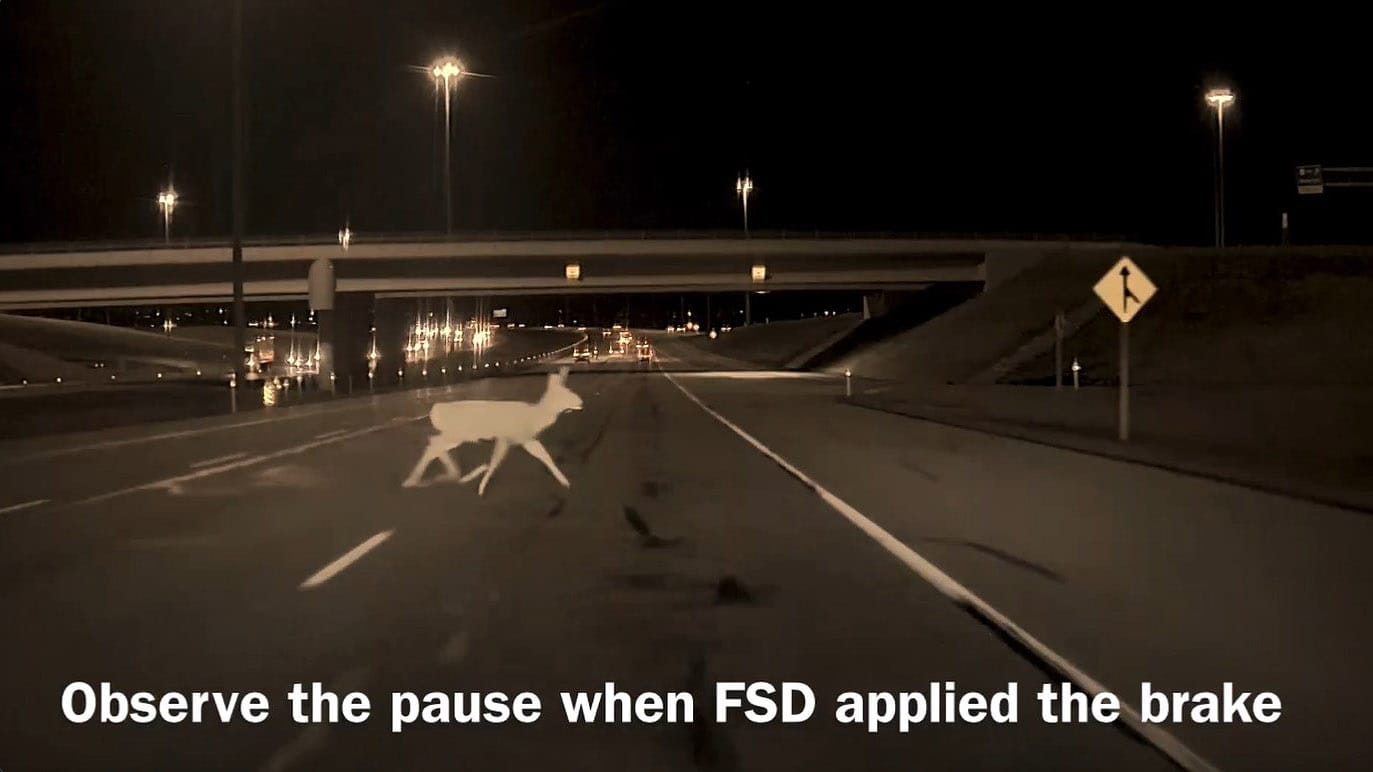Elon Musk has openly stated that he anticipates Tesla will demonstrate its Full Self-Driving (Supervised) feature is safer than human drivers by the second quarter of 2025.
Future of Driverless Technology
Once this is shown, it can remove the "supervised" label and create a path for the driverless Robotaxi service to get regulatory approval, allowing it to operate Cybercab services on public roads. This is expected to happen ahead of the anticipated mass production in 2026.
Recent Highway Incident
A recent event on a Canadian highway close to Calgary serves as further evidence of the necessary FSD responses that must be proven to assure regulators about safety for unsupervised driving. During the incident, a Tesla was driving on FSD at approximately 70 mph at night when a deer unexpectedly darted in front of the car. The FSD system reacted swiftly, briefly braking to allow the deer to pass, which startled the passengers inside.
The deer was later seen running away unharmed in the rearview camera, and the Tesla owner explained the momentary pause in the video: when the vehicle applied brakes, the speed difference between the deer and the car lessened momentarily, enabling the camera to capture more frames during that time. This can be observed in the slow-motion replay, where there is a noticeable halt in the deer’s movement, coinciding with the moment the brakes were activated.
Regulatory Investigations
However, instead of easing the regulatory pressure on Tesla’s FSD, the NHTSA has initiated another investigation regarding potentially misleading communications about its capabilities on social media. Tesla often highlights incidents like the deer event that portray FSD positively on X, but the NHTSA claims these representations can mislead the public.
The NHTSA contends that Tesla behaves as if its FSD system is sufficiently advanced to serve as an autonomous robotaxi, instead of portraying it as a partial automation and driver-assist system that necessitates constant attention and occasional driver intervention.
Tesla, on the other hand, counters this claim, asserting that there are numerous warnings while driving and precautionary statements within its FSD manual. "We believe that Tesla’s postings conflict with its stated messaging that the driver is to maintain continued control over the dynamic driving task," continues the NHTSA, which is also conducting another investigation into FSD’s safety performance in low-visibility situations that remains ongoing.


Leave a Reply